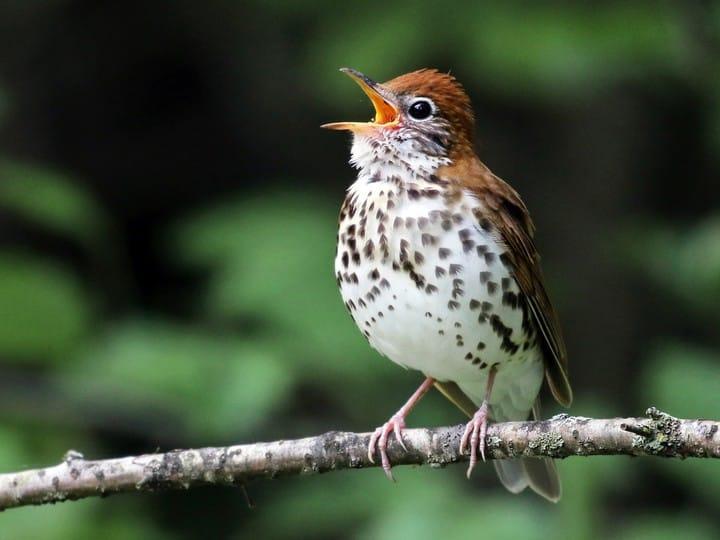
While wandering around the woods recently, I came upon a mutation of thrushes. That’s what a group of thrushes is called: a mutation. Ancient scientists believed thrushes mutated on their 10th birthday, growing new legs or something, which is strange because they only live 9 years. Scientists used to be so stupid, not the infallible gods they are today.
Thrush song is one of the most beautiful in the forest, and they have a lot to compete with: fairy choruses, the piping of wood nymphs, other avian songsters, and not to mention, transcendentalist poets in fits of whimsy and madness. According to Wikipedia, there are 3 parts to a typical thrush song, but I’ve identified 4 parts, and The Music of Wild Birds has 5.
The great F. Schuyler Mathews describes thrush song thusly:
The Wood Thrush’s music steals upon the senses like the opening notes of the great Fifth Symphony of Beethoven: it fills one’s heart with the solemn beauty of simple melody rendered by an inimitable voice. Certainly one of the most gifted of the woodland singers, the Wood Thrush’s notes are usually in clusters of three, and these are of equal value. No violin, no piano, no organ confined to such a limited score can appeal to one so strongly.
Thrush song is reminiscent of a Pentatonic scale. The thrush below sings in Bb Minor Pentatonic with some odd notes here and there. The entire songs fits nicely into Bb Dorian scale. Concert ready.
There are also lyrics to his song.
Come to me,
I am here,
Sweetest singer,
Warbling cheerily,
Tra-la-la-la-la-la-z-z-z!
Thrushes can learn 50 or so variations of this tune, but the 2nd phrase, “ee-oh-lay” is similar in all birds. The above notation was taken from the following video. The song starts at 0:17.
It’s no coincidence that thrushes sing in a near-human scale. All musical scales are based on the overtone series. When you pluck a single string on a guitar, a number of inaudible tones will also sound which color the audible tone. This is called “timbre” or “tone color” and distinguishes the same tone when played on different instruments. The dominant overtones found at the beginning of the overtone scale make up a Major chord.
There is a natural basis to music whether of the human or animal variety. Next time you hear a bird lick that sounds like some pop cliché, it’s no coincidence! All musicians are drawing from the same overtone scale that lies at the heart of sound.



